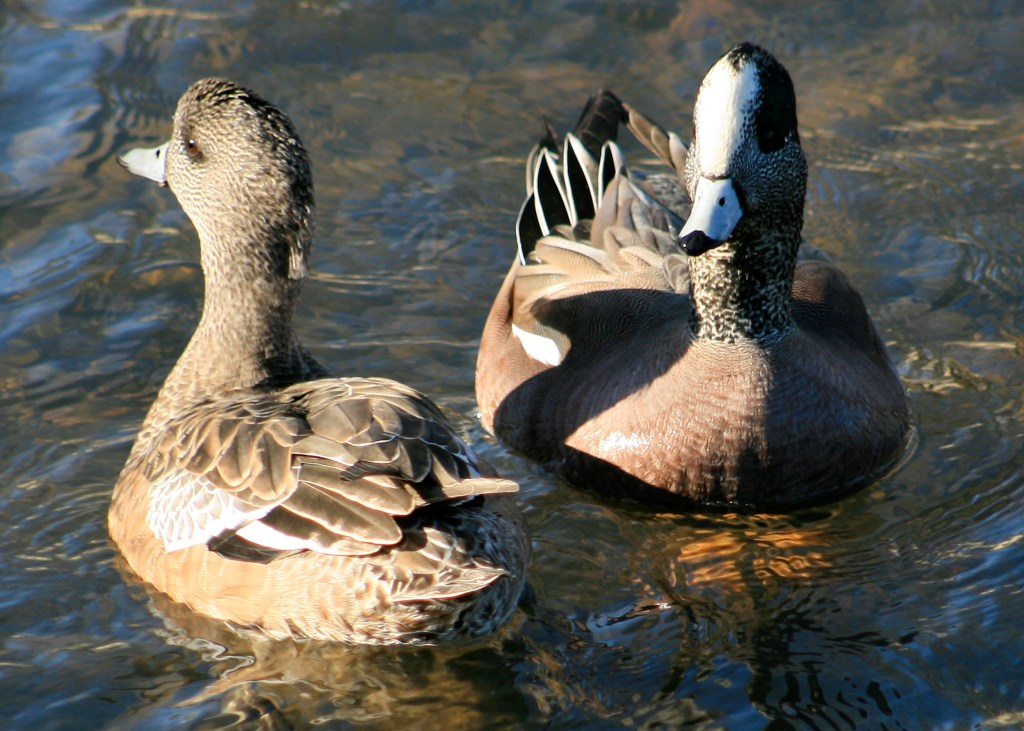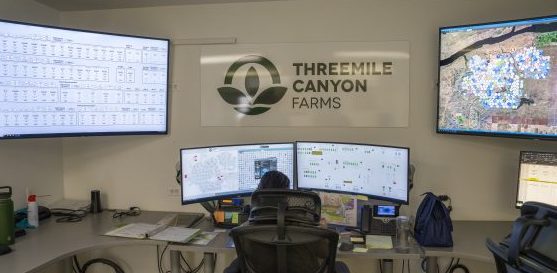Waterfowl hunting season starts Oct. 12
Published 5:00 am Sunday, October 6, 2024

- American wigeon drakes display a white pate, green eye stripes, purplish breast and flanks, white belly and wing covert patch and iridescent black/green speculum. The grayish hen shows white on the wing covert patch.
The first of several hunting seasons for ducks and geese starts Oct. 12.
Trending
Depending on the zone — parts of Northeastern Oregon are in Zone 1, parts in Zone 2 — there are additional seasons extending into 2025.
The Oregon Department of Fish and Wildlife has issued a forecast for hunting conditions across the region.
Baker County
Duck and goose hunting is expected to be similar to past years with a few resident birds available early in the season.
More migrant birds will arrive later in the season and hunting should improve, especially in the Baker and Keating valleys.
Almost all hunting is on private property, so be sure to ask permission before hunting. The Powder River from Baker City to Brownlee Reservoir offers the best waterfowl hunting.
Umatilla and Morrow counties
Hunting prospects depend on weather conditions. If the region does not experience a real winter, many of the northern migrants will stay in Washington.
The best hunting is usually later in the season (late November) after weather pushes birds down from northern areas. The Columbia River is usually the best opportunity for hunters on public land, but those who can access irrigated circles in northern Morrow County usually get good goose hunting.
Habitat in the Columbia Basin still supports large numbers of wintering Canada geese and the number of snow geese wintering in this area has greatly increased in recent years.
Waterfowl hunters should not forget about the Columbia Basin Wildlife Areas (Power City, Irrigon, Coyote Springs, Willow Creek). Food crops were planted and ponds have been enhanced, all of which will make conditions better for waterfowl hunting.
The Columbia Basin wildlife areas typically start seeing ducks arrive in waves. The first wave will include teal headed south; some years the teal have come and gone before the hunting season starts. In mild years the migration may be a little late allowing some teal hunting opportunity.
Shortly after that other puddle ducks will start showing up in greater numbers. With the removal of cattails and planting food plots, the wildlife areas are seeing more attention from mallards, gadwall, pintail and small numbers of wood ducks. The largest numbers of mallards seen on the wildlife areas typically occurs during the last few weeks of the season.
Waterfowl hunting on the wildlife areas is best during very windy conditions when ducks get blown off the Columbia River.
Grant County
Grant County offers limited waterfowl hunting opportunities due to lack of habitat — it’s mostly jump shooting on private land along the John Day River. There is some goose hunting along the John Day River on private lands. Be sure to seek permission before hunting.
Union County
Duck and goose hunting is expected to be similar to last year. Dry conditions have left fewer broods overall. Early water could make exceptional waterfowl hunting at the start of the season.
Limited public lands make Union County difficult to find waterfowl hunting opportunities. Ladd Marsh can be great waterfowl hunting at certain times throughout the season.
Ladd Marsh Wildlife Area
If significant precipitation doesn’t arrive soon, the huntable water will be minimal. A couple ponds are holding water and a good number of birds, but they are shrinking by the day.
Overall duck production seems to be down. Mallards are taking the top spot by a vast majority but some random birds are being seen around the area.
Hunters should call the office at 541-963-4954 to get an update on water levels or plan to make a trip out on one of the open days prior to the hunting season to scout out potential locations.
All visitors, including hunters, must have in their possession a free daily permit to access the wildlife area. Permits are available at several self-check-in stations at entry points and parking lots. The Wildlife Area is closed 10 p.m. to 4 a.m. daily. There is no camping in the wildlife area. Both of these rules include area parking lots.
Wallowa County
Waterfowl hunting should be similar to the previous few years. Expect good hunting opportunities later in the fall and early winter when migrating birds arrive.
The few resident Canada geese in the district have fared well, too. Most hunting is decoy hunting in agricultural fields, and jump shooting irrigation ditches so be sure to get landowner permission before hunting.
Malheur County
Many of the desert ponds dried up this summer because of mild winter conditions and very little precipitation, but those ponds that held water through the summer had fair duck and goose production. Desert ponds are also a good opportunity for early season jump shooting.
Fair waterfowl hunting is available in the Treasure Valley (agricultural areas near the Snake River in the vicinity of Ontario, Adrian and Nyssa) most of the season, and improves significantly during cold weather that reduces open water, concentrating birds and increasing the time spent foraging. Field hunting for both geese and ducks can be good for hunters willing to spend the time and effort to secure access to private land.
Migratory bird hunting seasons
Mourning dove
Zone 1 (Umatilla, Morrow, Gilliam, Sherman, Wasco counties)
Nov. 15-Dec. 14
Daily bag limit: 15
Possession limit: 45
Zone 2 (Baker, Union, Wallowa, Grant, Harney, Malheur, Wheeler, Crook, Lake, Deschutes, Jefferson, Klamath counties)
Sept. 1-Oct. 30
Daily bag limit: 15
Possession limit: 45
Ducks (including merganser)
Zone 1
Oct. 12-27, Oct. 31-Jan. 26
Daily bag limit: 7, including not more than two scaup, two hen mallards, one pintail, one harlequin, two redheads and two canvasbacks
Possession limit: triple the daily bag limit
Zone 2
Oct. 12-Dec. 1, Dec. 5-Jan. 26
Daily bag limit: 7, including not more than two scaup, two hen mallards, one pintail, one harlequin, two redheads and two canvasbacks
Possession limit: triple the daily bag limit
Scaup
Zone 1
Nov. 2-Jan. 26
Daily limit: 2
Zone 2
Oct. 12-Dec. 1, Dec. 5-Jan. 8
Daily limit: 2
Coot (same as duck seasons by zone)
Daily bag limit: 25
Possession limit: 75
Wilson’s snipe
Zone 1
Nov. 2-Feb. 16
Daily bag limit: 8
Possession limit: 24
Zone 2
Oct. 12-Jan. 26
Daily bag limit: 8
Possession limit: 24
Crow — statewide
Oct. 1-Jan. 31
No bag or possession limits
Goose hunting
Canada goose
Mid-Columbia Zone (Umatilla, Morrow, Gilliam, Sherman, Wasco, Hood River counties)
Oct. 12-27, Nov. 5-Jan. 26
Daily bag limit: 4
Possession limit: 12
High Desert/Blue Mountains Zone: (Baker, Union, Wallowa, Grant, Harney, Malheur, Wheeler, Crook, Lake, Deschutes, Jefferson, Klamath counties)
Oct. 12-Dec. 1, Dec. 10-Jan. 26
Daily bag limit: 4
Possession limit: 12
Regular white-fronted and white goose
Mid-Columbia Zone (Umatilla, Morrow, Gilliam, Sherman, Wasco, Hood River counties)
Oct. 12-Jan. 1, Feb. 1-23
Daily bag limit: 10 white-fronted and 20 white geese
Possession limit: 30 white-fronted and 60 white geese
High Desert/Blue Mountains Zone: (Baker, Union, Wallowa, Grant, Harney, Malheur, Wheeler, Crook, Lake, Deschutes, Jefferson, Klamath counties)
Oct. 12-Dec. 1, Jan. 16-March 10
Daily bag limit: 10 white-fronted and 20 white geese
Possession limit: 30 white-fronted and 60 white geese
Brant
Statewide, Nov. 30-Dec. 15
Daily bag limit: 2
Possession limit: 6









